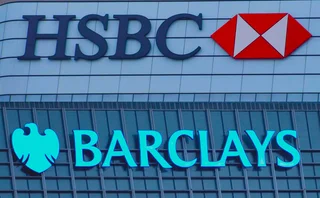
Editor's Letter
Last month's conviction of Ken Lay and Jeff Skilling on charges relating to the collapse of Enron felt like another important landmark on the road to recovery for energy trading. The 'end of Enron effect' certainly added to the general sense of optimism that was unmissable in Houston last month when the Energy Risk team travelled there for Energy Risk USA 2006. With more than 300 attendees, it was our biggest event since Enron's collapse.
Energy Risk events are, I was told by many conference delegates, viewed as something of a barometer for the health of the energy trading industry, so we were not the only ones delighted with the high attendance. Like everyone at the conference, we also hope it is a good indicator of how well the market is picking up again.
Not only has the worst of the Enron effect now been well and truly absorbed by the market, but the market is arguably stronger as a result. The integration of the Enron diaspora around the market in the months and years after its fall undoubtedly benefited the market as a whole as well.
But recently there has been a new development - the re- emergence of the energy merchant model in smaller, privately-run companies. These discrete centres of Enronian-style genius spread around the market have the potential to take the industry in some very exciting directions. And it's important that they be allowed to do so. When trying to protect against a repeat of the Enron catastrophe it's crucial that the brilliance of Enron is not overshadowed or muddled up with the fraud case. The baby mustn't be thrown out with the bath water.
Only users who have a paid subscription or are part of a corporate subscription are able to print or copy content.
To access these options, along with all other subscription benefits, please contact info@risk.net or view our subscription options here: http://subscriptions.risk.net/subscribe
You are currently unable to print this content. Please contact info@risk.net to find out more.
You are currently unable to copy this content. Please contact info@risk.net to find out more.
Copyright Infopro Digital Limited. All rights reserved.
As outlined in our terms and conditions, https://www.infopro-digital.com/terms-and-conditions/subscriptions/ (point 2.4), printing is limited to a single copy.
If you would like to purchase additional rights please email info@risk.net
Copyright Infopro Digital Limited. All rights reserved.
You may share this content using our article tools. As outlined in our terms and conditions, https://www.infopro-digital.com/terms-and-conditions/subscriptions/ (clause 2.4), an Authorised User may only make one copy of the materials for their own personal use. You must also comply with the restrictions in clause 2.5.
If you would like to purchase additional rights please email info@risk.net
More on Regulation
Snap! Derivatives reports decouple after Emir Refit shake-up
Counterparties find new rules have led to worse data quality, threatening regulators’ oversight of systemic risk
Critics warn against softening risk transfer rules for insurers
Proposal to cut capital for unfunded protection of loan books would create systemic risk, investors say
Barr defends easing of Basel III endgame proposal
Fed’s top regulator says he will stay and finish the package, is comfortable with capital impact
Bank of England to review UK clearing rules
Broader collateral set and greater margin transparency could be adopted from Emir 3.0, but not active accounts requirement
The wisdom of Oz? Why Australia is phasing out AT1s
Analysts think Australian banks will transition smoothly, but other countries unlikely to follow
EU trade repository matching disrupted by Emir overhaul
Some say problem affecting derivatives reporting has been resolved, but others find it persists
Barclays and HSBC opt for FRTB internal models
However, UK pair unlikely to chase approval in time for Basel III go-live in January 2026
Foreign banks want level playing field in US Basel III redraft
IHCs say capital charges for op risk and inter-affiliate trades out of line with US-based peers







